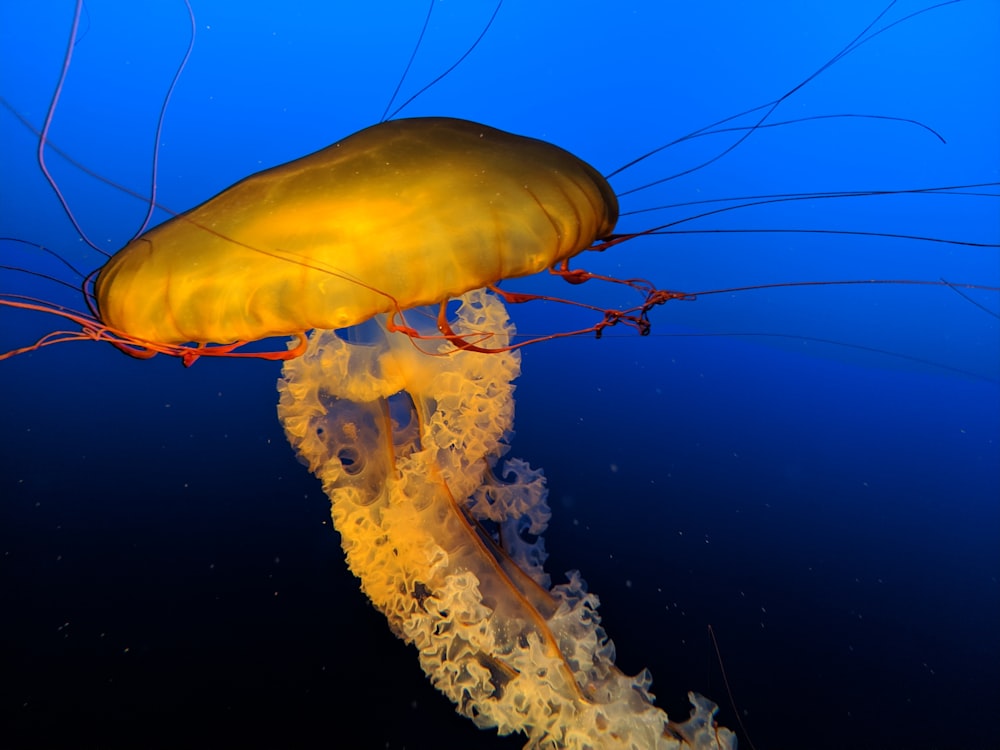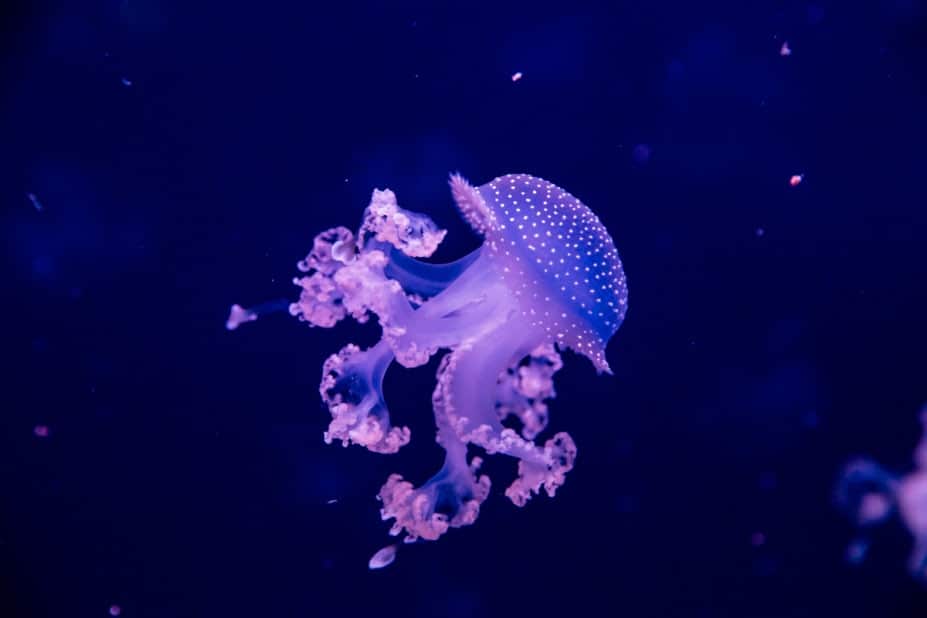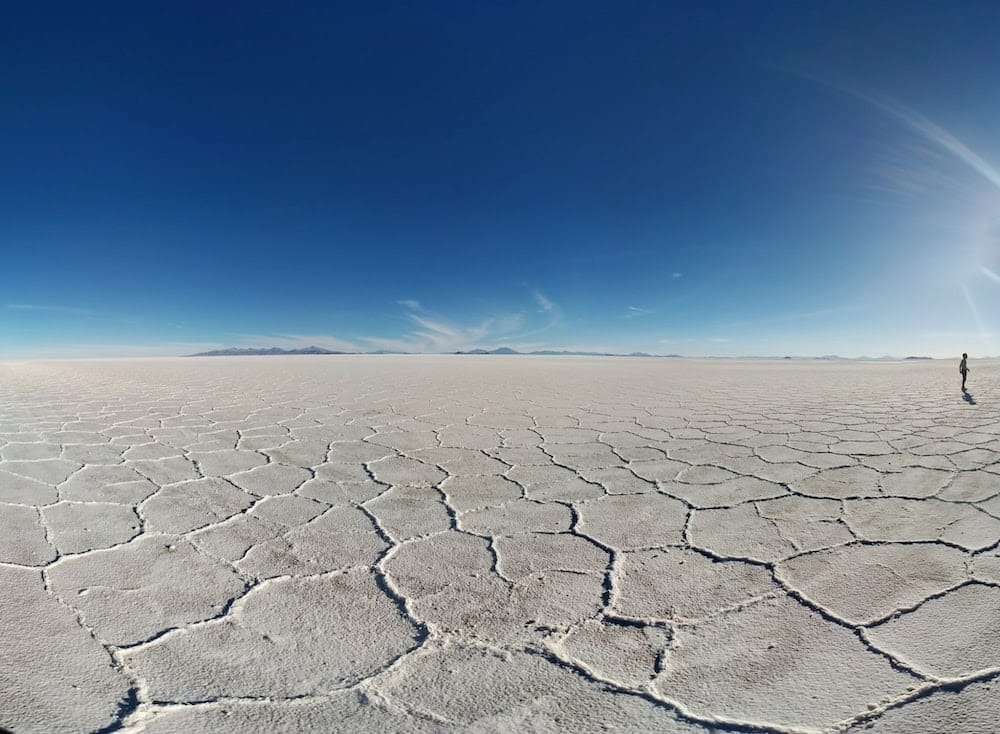
They’re beautiful to look at, blue or transparent, but their stings are extremely painful: while jellyfish disrupt bathing on the Mediterranean coast, they also harbor specific physiological characteristics, the study of which has advanced science and opened up a host of possible uses.
Every year, at the beginning of June, a number of jellyfish invade the beaches of Corsica and the Côte d’Azur. Pelagia noctiluca, small purple jellyfish found throughout the Mediterranean, are tossed about by the sea. But hopes of getting rid of them are illusory.
Jellyfish, which appeared 600 million years ago, were among the planet’s first inhabitants.
Composed of 95 to 98% water, they have no brain, can float and swim, but cannot withstand ocean currents, and are part of the zooplankton. And “they are present all year round, in a current that circles the Mediterranean and tends to stay offshore”, explained Fabien Lombard, teacher-researcher at the oceanography center in Villefranche-sur-Mer (Alpes-Maritimes). “It’s the southerly flow that has brought them back to the coast”.
In Ajaccio, Corsica, they were seen by the thousands. On Saint-François beach, in the heart of the city, Simone Martini, an Italian bather, was one of many to have a painful encounter with them: covered with stinging cells, the cnidocytes, the jellyfish tentacles grazed his forehead, releasing tiny harpoons that inject a cocktail of venom.
“Fifteen days later, I still have a burn that hurts at times,” he explained.
“These blind animals sting everything they touch in an attempt to eat. They inject neurotoxins to immobilize their prey, and digestive enzymes,” explains Fabien Lombard.
There are websites that track their presence, such as meduseo.com, and everyone has their own method for soothing post-bite pain. “Peeing on them doesn’t help,” laughs Fabien Lombard, who advises against “rubbing, rinsing with seawater, and removing stinging cells with wet sand”.
In environmental terms, their proliferation is said to be such as to cause “gelification” of the oceans, according to a September 2019 report by the Intergovernmental Panel on Climate Change (IPCC).
An assertion that divides the scientific community: “We don’t have any reliable measurements to say that there’s more of it,” says Fabien Lombard. While acknowledging that “in the 80s and 90s, in Villefranche-sur-Mer, there were 5 to 6 years with jellyfish and the following 5-6 years without, this is the 25th non-stop year with jellyfish”.
For Lovina Fullgrabe, a scientist at the Stareso underwater and oceanographic research station in Calvi (Haute-Corse), “overfishing, which eliminates their predators such as tuna and turtles, is one of the hypotheses” favored to explain this greater frequency.
And while the United Nations Food and Agriculture Organization (FAO) recommended eating them in 2013 to combat their proliferation, Fabien Lombard warns against treating “this symptom of an imbalance in the sea” rather than the original disease, which is the scarcity of fish due to overfishing.
It’s true that these animals are a cause for concern, but they have also led to significant scientific advances.
At the beginning of the 20th century, in 1913, the Nobel Prize for Medicine was awarded for work on the venom of jellyfish cousins, which led to the understanding of “anaphylactic shock”: the venom diminishes rather than reinforces the immunity of those already stung.

“It was a bit of a revolution: until then, everyone had tended to believe that ‘the more you’re exposed to something, the less sensitive you are to it’,” explains Fabien Lombard.
And at the beginning of the 21st century, in 2008, a second Nobel Prize, this time in chemistry, crowned work on the ability of certain jellyfish to glow in the dark, via a protein. This fluorescence has been used by numerous biochemists, biologists, and medical researchers in their research, notably on tumors or Alzheimer’s disease, as the Nobel Committee pointed out in 2008.
It has revolutionized cell biology by making it possible to literally “switch on” cells when they are activated, to see how they function”, summarized Fabien Lombard.
In Houston, within NASA, NASA has taken jellyfish onboard space flights to study their reproduction in zero gravity, and the European Union launched a call for projects in 2017, “GoJelly”, to study how to benefit from them in the food, fertilization, cosmetics or depollution sectors.
For “Jellyfish are full of potential”, assures the teacher-researcher: they are used as feed for aquaculture fish, fertilizer, or soil moisture stabilizer for crops such as vines in the Landes (Biarritz) region, rice in China or basil in Mexico. Their collagen is used in cosmetics and sanitary tampons in Israel, and to soften concrete in earthquake-resistant installations in Russia, lists the scientist.
For him, the most promising use is “jellyfish mucus”, composed of a molecule that “seems to promote the regrowth of human cartilage”.
Something to think about the next time you go swimming.






